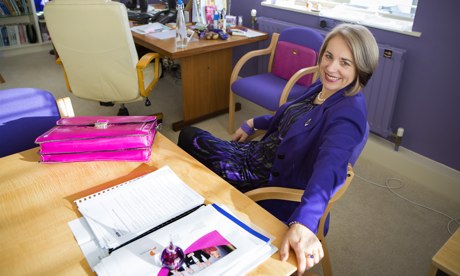How to give your kids everything but a sense of entitlement
Kids who understand gratitude have better grades and are less likely to get depressed. This was the conclusion of a recent story in the Wall Street Journal that struck a chord with both my husband and me.
+
Both of us hail from immigrant families who arrived to the US in the 1970s. Both of us grew up poor. When I was a kid, everything we owned was either a hand-me-down or picked up from the curb. My husband and I share stories of being shaped as latch-key kids with no toys and high-water jeans.
+
I hesitated starting a toy-review blog because I knew my kids would be testing and playing with most of the toys. New toys. Lots of them. I feared too many toys would make them ungrateful or, as others might say, “spoiled.” The idea of spoiling kids is incongruous to the parent I want to be. And yet, I still give them toys because I love them (the toys and the kids) so much.
+
So parents like me face this dilemma: We want to give our children everything we didn’t have. But we don’t want them to forget where they came from either. The truth is, though, that I learned gratitude because it was forced on me: My parents simply didn’t have material things to give me so I learned to be thankful for the little we had. So by giving my kids what I never had—toys, snow boots, fashionable jeans—would they be destined to become ungrateful?
1
The question has consumed me for much of the last year, and so, the Wall Street Journal article was timely. It encourages families to make their children do chores and express thanks for their meals and other gestures. But I have young kids and those tactics felt too abstract.
+
And so, I turned to the best tools I have to make my kids understand: toys. Kids do not know how big or little your paycheck is. Kids do not understand what income tax or health insurance deductibles are either. However, they do know how much a Nintendo DS game cartridge costs. They know how much a Wii costs. Or a slice of pizza or a bottle of Gatorade. This is their vocabulary—their understanding of values in our material world. We can work with that. And to get our kids to understand the meaning of gratitude, we must.
+
If kids cut the veggies, they will eat them
The two areas I wanted to most impart gratitude: food and play. With food, my kids were horribly picky and wasteful. It was getting out of hand and so I sought help from Susan Roberts, a pediatric occupational therapist and author of My Kid Eats Everything. She told me kids eat horrible diets today because they are just being “fed.”
+
“It is such a passive process now,” she says. In the past, until about the mid-20th century, kids joined families in the kitchen, helping to prepare food, setting the table, clearing the table, and washing the dishes. Among the, as Roberts terms them, “multi-causal factors that have contributed to the decline in children being involved in meal preparation and clean up” are: changes in agriculture making it easier for restaurants to sell food cheaply, the increase in convenience stores, and more women at work.
“People eat out much more often,” she said, so kids are not eating what’s available, they are ordering what they want. Roberts actually tells families that even if they go out to restaurants, the parents should still order the food for the child. “We have to put the parents back in charge of food. Right now, it’s the children who are in charge so of course, they’re going to eat gummy bears and goldfish crackers.” Long ago, Roberts reminds, children even caught their family’s food.
+
Two products that helped me involve my kids in cooking: doodle by Stitch aprons and Curious Chef knives. These are not play kitchen toys. The doodle (the brand is lowercase) aprons are $24 adjustable aprons made to fit children. Children can write on them, wash them, and then re-use them. Meanwhile, the knife ($3.99) by Curious Chef is also a great tool. Made of nylon, you can literally clench the blade and not get hurt—but it still can cut cheese, meat, celery, etc.
+
For my eldest son, a 9-year-old, we laid out a mission: to grill our July 4th barbecue cheeseburgers. As we began our very first step—buying food–I suddenly understood how this could work. In the butcher shop, my son asked me where the “round circle” hamburgers were. He had no idea what ground beef really looked like or how it was made. I was ashamed. And then I showed him.
+
At home, he donned his personalized apron and got to work, cracking eggs and kneading the meat with his bare hands. I thought he would be grossed out but he was beaming with pride. He formed and grilled the patties, sliced the tomatoes, and babysat his burgers, feeling scared occasionally from the heat on the grill. I don’t think I have ever seen my son eat a burger so fast in his life. He watched all of us eat ours, too. He was so grateful, he even washed the dishes.
+
Lego lessons on money
Teaching my children to be grateful for their toys was very challenging because they just have so many. So I decided to challenge them with the one they love the most: Legos.
+
I had noticed that my children were expecting me to buy them one set after another. They are often gorgeous and elaborate, ranging from remote- controlled passenger trains to majestic models of famous buildings like the Burj Khalifa and the Eiffel Tower. This year, Lego launched a Disney Princess line with a set that resembles Cinderella’s castle at Disney theme parks.
Even the smallest details of a set, like wine goblets, roast chickens, antennae, almost always connect with a signature, satisfactory Lego snap. Kids like mine are infatuated with those details and, thus, with Lego overall. The problematic part I noticed was that when my kids tried to make something using solely their own creativity, they became quickly dissatisfied with their attempt and then they would start asking me to buy them more sets.
+
My first instinct was to swear off Lego, but I have always resolved to be fair and honest with my kids. To pretend to not be able to afford certain things is not a good lesson either and hardly will teach them gratitude. I decided to make them more grateful for their current collection and get them to see them as a strategic investment.
+
As with our our July 4th cheeseburgers, I brought my children in on the buying process. I decided to physically bring them to an actual brick-and-mortar Lego store and teach them how to shop smart. Now that I shop for everything online, I forget what kind of impact shopping with the kids can have. Kids can never grow up to be good consumers unless I teach them how to recognize value and quality and there is no better medium for teaching kids this than with the subject in which they have the most expertise: toys.
+
Once at the Lego store, we headed to the Pick A Brick Wall. They watched other children dumping handfuls of bricks into containers that customers could buy for a fixed price ($7.99 for the small and $14.99 for the large). My kids were about to do the same but I asked them to be more mindful about what they wanted to make and how many bricks they could actually fit into the container. This was incredibly difficult for them.
+
Just like a kid in a candy store, the Pick A Brick Wall can be overwhelming. You can easily get greedy and forget why you are there, that is, to get a lot of bricks and to get the ones you really want. The space within the container is finite and so was our time. I gave the kids two options: get the small container and not be questioned about its contents or the bigger container but only if they followed my lesson on being resourceful.
I would pay for only one option. They chose the latter. So to gain the most value for our money, I asked them to snap a row of same-color bricks together and then carefully place them into the container. It was a time-consuming process, best done sitting on the floor of the store.
+
Once they started, though, it was so obvious to my children that they could put a lot more bricks and pieces in with this method. The store employees smiled and said that they have never seen anyone do that before. Passerby parents asked their kids to do the same; none of them would. My kids started to become embarrassed but I reminded them of that other option—a smaller container and fewer Legos.
+
After all that hard work of stacking as many as 270 (1×4) bricks into that one container, they poured in their favorite pieces into the many gaps between the stacks. These were tiny translucent studs that they use as “treasures” when they play. Since then, my kids have become more enthusiastic about building and take better care of the bricks they own.
+
Now, they always go to their favorite bricks first, the ones they worked so hard to get. At least for their beloved Lego bricks, they certainly are grateful. I also constantly remind them that the minute they stop showing gratitude for their toys is the minute I start packing them up to send away to relatives or for donation. Or sometimes, while they are off at school, I will just pack up the toys and games that haven’t been touched and, months later, mysteriously bring them out again.
+
As parents, despite wanting to give our kids everything, one of the greatest gifts we can give is to literally give less, to force decision-making and awareness among all their choices. We need to have more faith in them and let them be challenged. It’s not easy to watch your kids struggle—but in the end, it does breed gratitude. And there is no question that these lessons are most effective if you start early and consistently through every child’s primary occupation: play.




















































